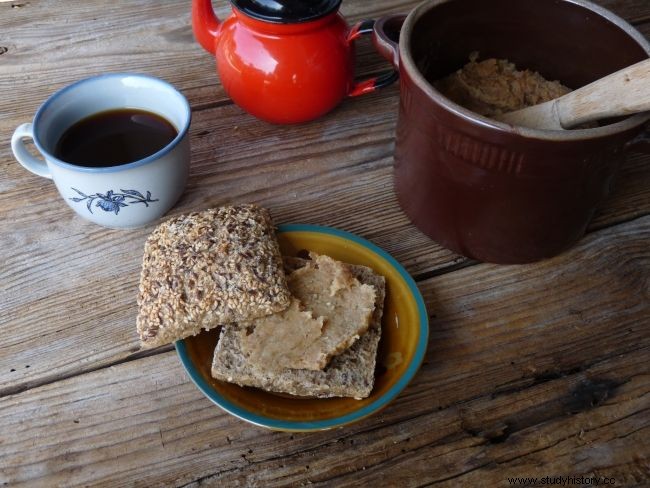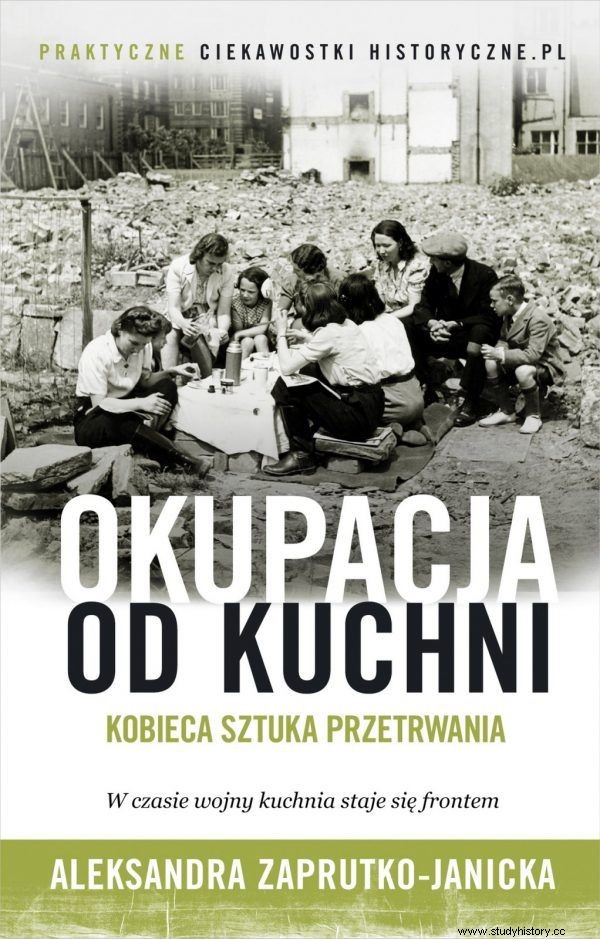Are you bored with supermarket cheeses and butters? Try to spread something really unique and authentic on the bread. Just be careful - you will get fat from this.
Animal fats, including lard, were expensive and difficult to obtain during the Second World War, but had one major advantage - high calorific value. Given the pitifully low rations, any additional energy source was almost worth its weight in gold. All backfat spreads proved to be perfect. Ideally, they should contain a source of vitamins in large amounts.
Recipes for several different additives to bread are given by Elżbieta Kiewnarska in the book "100 economical dishes of today" from 1941. I tested one that resembles bread lard.
Miraculous lard multiplication
One of the best specialists in the field of Polish cuisine - the unforgettable Hanna Szymanderska - in her "Encyclopedia of Polish Culinary Art" reminds us that lard has long been used as a winter addition to bread. It was smelted from pork fat, fat and bacon. In a word, who likes what.
Some people added smoked bacon to the fat, others apples, garlic, marjoram, prunes or thyme. In each home, lard was prepared a bit differently, but it was always the lard or bacon that played the first fiddle and they were the most in the composition.

Breakfast in the occupation style:black acorn coffee and dark bread smeared with "lard".
Meanwhile, Elżbieta Kiewnarska gave a completely different recipe. Lard is only one sixth of all ingredients. This is due to a simple calculation. If the hostess managed to get some fat during the war, it must have been enough for her for a few days and quite a lot of dishes.
The only way was to "multiply" it as efficiently as possible by increasing the number of other components of the dish. A perfect example is the aforementioned bread spread.
Ingredients:
20 dkg of fresh bacon
80 dkg of onion
20 dkg of apples
marjoram
salt and pepper to taste

The female art of survival in Aleksandra Zaprutko-Janicka's book "Occupation from the kitchen".
Preparation method:
Slice the lard finely, or grind it in a coarse-mesh grinder. Dice the onion. Fry the shredded bacon in a large frying pan so that the greaves are lightly browned and sunk in boiling fat. Pour the onion into the pan and fry until translucent.
Peel the apples, grate them on a fine grater, squeeze the juice out. Pass the onion, fat and apples through a meat grinder, add salt to taste, or add a little pepper. Then mash for a moment more so that the mass becomes quite smooth. Season with finely ground marjoram. Keep in a cool stone vessel.
Impressions:
While preparing this spread, I changed Kiewnarska's recipe a bit. I honestly admit that, in order to save myself a lot of work, I bought the pork fat immediately. Instead, I fried it with the onion according to the original recipe.
I introduced modifications at a later stage. After squeezing the juice, I added the apples directly to the pan and fried them until they were soft. In addition to marjoram and salt, I seasoned the whole with a bit of tarragon. Even a pinch is enough for the spread to acquire a specific aroma.
Instead of passing it through a meat grinder, I blended it into a smooth paste. A moment after being prepared it was suitable for spreading on bread, but it tasted much better the next day.
When I opened the fridge the next day and smelled the spread, my salivary glands went crazy. The spread is absolutely delicious, especially on potato bread from the last edition of the "Historical Lady of the House" . Due to the proportion of onions and apples to bacon it tastes different than the classic "lard" prepared in my family home. For me, it is still number one. And it probably has a bit less calories…
